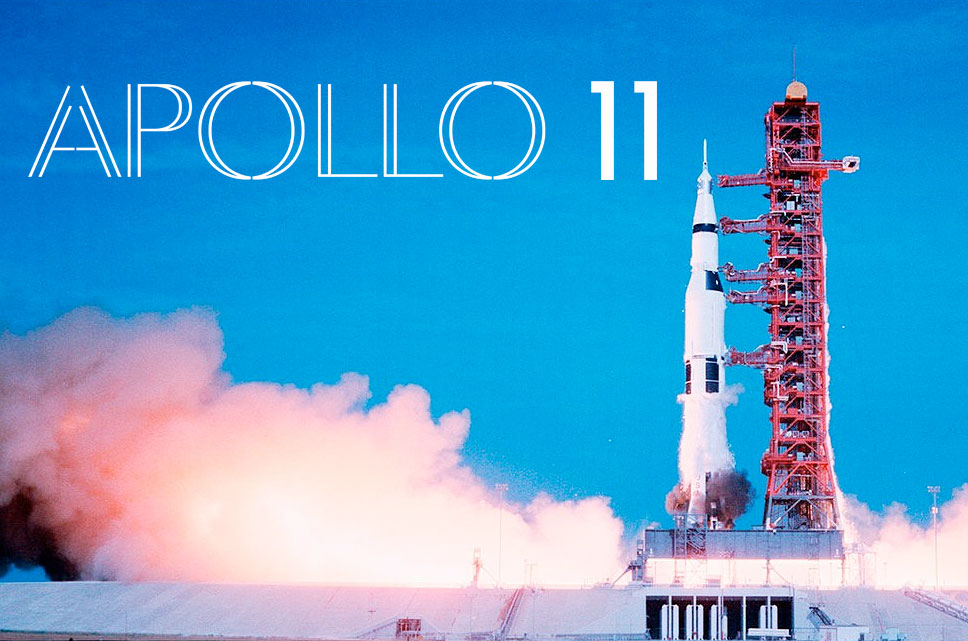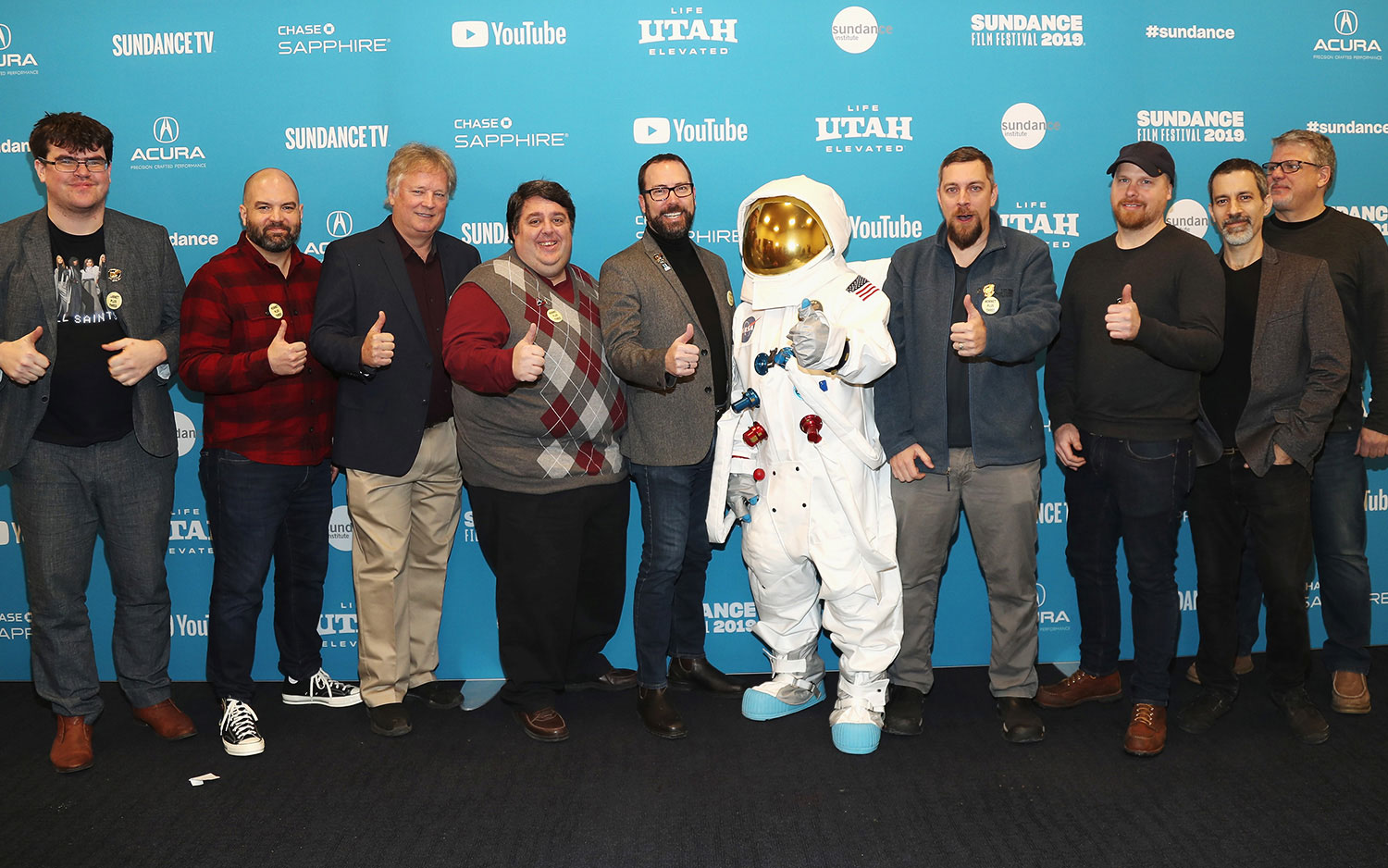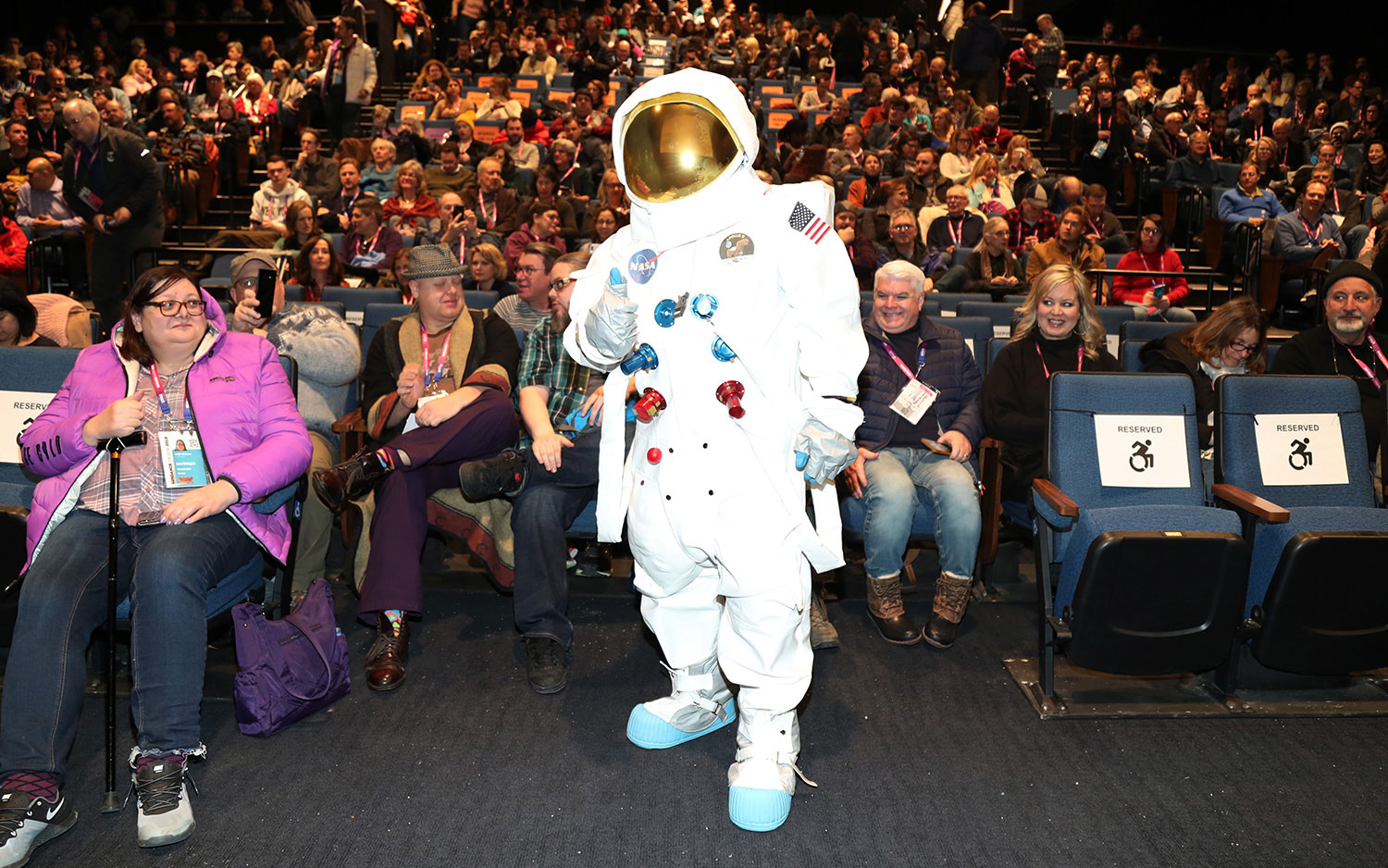'Apollo 11' Lands at Sundance with Never-Before-Seen Mission Footage

PARK CITY, Utah — Attendees at this year's Sundance Film Festival are getting a first look at never-before-seen footage from the first moon landing mission.
Billed as "a cinematic event fifty years in the making," director Todd Douglas Miller's "Apollo 11" premiered Thursday (Jan. 24) as one of the festival's opening night films. The 93-minute documentary, presented by Neon and CNN Films, was crafted from a newly-discovered trove of large-format, 65mm footage and more than 11,000 hours of uncatalogued audio recordings to provide a new look of one of the most iconic and historic moments in human history.
Disclosure: The author of this article, collectSPACE.com editor Robert Pearlman, served as the historical consultant on "Apollo 11."
"'Apollo 11' tells the story of Apollo 11, the mission, in a direct cinema way," said Miller in an interview with collectSPACE. "The intention was to make an art film out of all of the archival materials that we had available." [NASA's 17 Apollo Moon Missions in Pictures]
"We've jokingly called it 'Dunkirk' in space, but it is a good parallel of the narrative arc of the story in that you're dropped right into mission, right before the launch, and it ends with the astronauts returning home. It's really a fly-on-the-wall, direct cinema experience," said Miller.
The film relies entirely on archival footage and audio to tell the story of the July 1969 Apollo 11 mission, which landed Neil Armstrong and Buzz Aldrin on moon while Michael Collins remained in lunar orbit.

Miller and his team collaborated with NASA and the National Archives (NARA) to locate all of the existing footage from the Apollo 11 mission. In the course of sourcing all of the known imagery, NARA staff members made a discovery that changed the course of the project — an unprocessed collection of 65mm footage, never before seen by the public. Unbeknownst to even the NARA archivists, the reels contained wide format scenes of the Saturn V launch, the inside of the Launch Control Center and post-mission activities aboard the USS Hornet aircraft carrier. [NASA's Apollo 11 Moon Landing in Photos]
Get the Space.com Newsletter
Breaking space news, the latest updates on rocket launches, skywatching events and more!
The find resulted in the project evolving from one of only filmmaking to one of also film curation and historic preservation. The resulting transfer — from which the documentary was cut — is the highest resolution, highest quality digital collection of Apollo 11 footage in existence.
"We knew that the clock was ticking, this material had been sitting around for 50 years," said Miller, commenting on the motivation behind the film scanning effort.
The other unexpected find was a massive cache of audio recordings — more than 11,000 hours — comprising the individual tracks from 60 members of the Mission Control team. "Apollo 11" film team members wrote code to restore the audio and make it searchable and then began the multi-year process of listening to and documenting the recordings. The effort yielded new insights into key events of the moon landing mission, as well as surprising moments of humor and camaraderie.
"Much of the footage in 'Apollo 11' is, by virtue of both access and proper preservation, utterly breathtaking," wrote The Hollywood Reporter's Daniel Fienberg in his review of the film. "The sense of scale, especially in the opening minutes, sets the tone as [the] rocket is being transported to the launch pad and resembles nothing so much as a scene from 'Star Wars' only with the weight and grandeur that come from 6.5 million pounds of machinery instead of CG."

Thursday's premiere brought together Miller with the members of his production team, including producers Thomas Petersen and Evan Krauss, composer Matt Morton, archival producer Stephen Slater and technical consultant Ben Feist. Rick Armstrong, son of the late Neil Armstrong, joined the filmmakers on the red carpet at the Park City, Utah event.
Neon is planning a theatrical run for "Apollo 11" later this spring (a date for the release is expected soon), with a giant screen release for museums and science centers in May, followed by CNN airing a version of the documentary closer to the 50th anniversary of the Apollo 11 mission this summer.
Follow collectSPACE.com on Facebook and on Twitter at @collectSPACE. Copyright 2019 collectSPACE.com. All rights reserved.
Join our Space Forums to keep talking space on the latest missions, night sky and more! And if you have a news tip, correction or comment, let us know at: community@space.com.

Robert Pearlman is a space historian, journalist and the founder and editor of collectSPACE.com, a daily news publication and community devoted to space history with a particular focus on how and where space exploration intersects with pop culture. Pearlman is also a contributing writer for Space.com and co-author of "Space Stations: The Art, Science, and Reality of Working in Space” published by Smithsonian Books in 2018.In 2009, he was inducted into the U.S. Space Camp Hall of Fame in Huntsville, Alabama. In 2021, he was honored by the American Astronautical Society with the Ordway Award for Sustained Excellence in Spaceflight History. In 2023, the National Space Club Florida Committee recognized Pearlman with the Kolcum News and Communications Award for excellence in telling the space story along the Space Coast and throughout the world.










